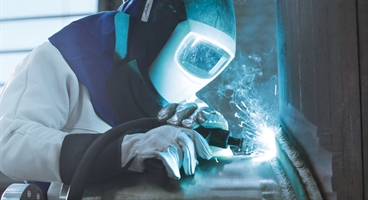
As a joining method, welding has been around for centuries. Today, roughly 100 welding methods are used in different industry sectors. The use of industrial gases (whether as individual gases or gas mixtures) to optimise welding processes dates back to the 40s and 50s. Since then the gas based welding processes have emerged to be the predominant group of welding methods.
Important gas-shielded welding methods are MIG, MAG, TIG and plasma. MAG welding is the preferred method for normal unalloyed steels although it can also be used on stainless steels and other materials.
The 80s and 90s saw many welding innovations. These included laser, tandem and laser-hybrid welding.
An in-depth understanding of the ‘internal properties’ of gas components and their interaction in specialised mixtures is essential for successful use of process gases in specific welding applications. The welding arc itself, a highly efficient but complex tool,consists largely of different amounts of ionised gas and metal vapour. This means the physical properties of the gas have a direct and immediate impact on the arc. In addition, the process gases also contact the hot metal, a highly reactive area, in which the chemical and metallurgical effects of the gases also play an important role.

